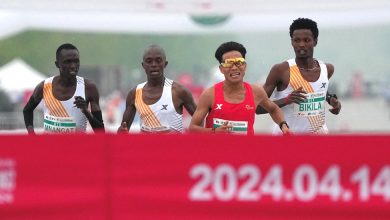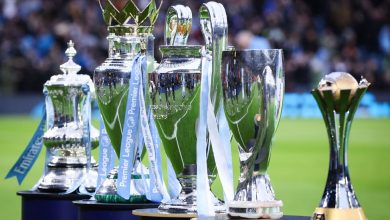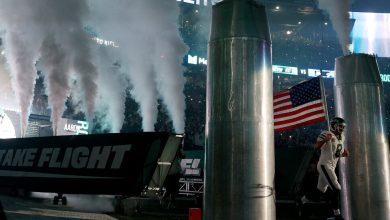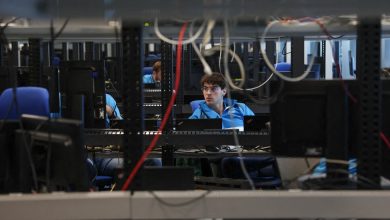He Helped Arthur Ashe With His Backhand but Never Had a Lesson Himself

In 1951 Dick Savitt, a self-taught tennis player, stunned the world by winning both the Australian Open and Wimbledon, becoming the first Jewish champion of both vaunted tournaments.
“Dick Savitt of Orange, N.J., who never took a tennis lesson, established himself as the world’s No. 1,” announced The New York Times after the Wimbledon win, one of the shortest finals ever played on Center Court at that time. The match (6-4, 6-4, 6-4) was over in 63 minutes.
Mr. Savitt retired from major tournaments the following year. But he stayed committed to the sport, competing when he could and mentoring other athletes in New York City, where he has lived since the late 1950s. He has been in the same Manhattan apartment, near the Metropolitan Museum of Art, since 1963. His home is full of trophies and coffee table books, like “100 Years of Wimbledon” and “Great Jews in Sports.”
Bid Goswami, a close friend of Mr. Savitt’s who led the men’s tennis program at Columbia University for almost 40 years, said that tennis greats like Arthur Ashe and Don Budge would seek him out for play when they came to town. “Mr. Ashe used to talk about Dick’s ‘heavy shots,’” he said.



Mr. Savitt, who won Wimbledon in 1951, center, keeps his trophies and mementos in his apartment on the Upper East Side of Manhattan. Credit…Carly Zavala for The New York Times; Central Press, via Getty Images
When he wasn’t playing with tennis stars or coaching young athletes at Columbia, Mr. Savitt would teach the sport to his son, Bob Savitt, who went on to found the commercial real estate company Savitt Partners. The two ended up competing in father/son tournaments together.
As Wimbledon gets underway in London, The New York Times caught up with Dick Savitt, now 95, Bob Savitt and Mr. Goswami about their thoughts on tennis, New York and Dick Savitt’s legacy. The following interview is an edited and condensed version of the conversation.
What brought you to New York City?
Dick Savitt (DS):In the 1950s I was working for an oil firm in Texas. There was no money in tennis back then, so everyone was an amateur. My company asked me to open a New York office, and that’s why I came.
It can be hard to find courts here. Where did you play?
DS: I played a lot in Central Park, and also on the clay courts on 96th Street. I used to know the guy who ran them, so he knew what time I was going to come, and he would save the court for me. I didn’t have to wait. A lot of people would watch me play. There are now waiting lists to play on the courts.
Bob Savitt (BS): I played the most with my dad at a Midtown tennis club and also at this apartment building on 65th and Columbus that had one court. A good friend of my father’s had court time there every Saturday and Sunday. A lot of the great players came to play there, like Bjorn Borg.
Who did your father play with?
BS:He played with Vitas Gerulaitis and Arthur Ashe the most, but also Dick Stockton and other professionals when they were in the city.
DS: Ashe was very organized. He knew where he was weak, and he wanted me to help him. The way it works in tennis is when you play with people, you figure out where your efforts should go. If you played with a guy who was a better volleyer than you, you knew you needed to work on your volley. I remember helping Ashe with his backhand. We would play at Columbia or in the park. Once in a while we got a few beers afterward.
Bid Goswami (BG):Dick used to play with his son a lot. They used to play the father/son nationals and when they finally won in 1981 after two or three tries, Dick said, “This is bigger than me winning Wimbledon.”
The tennis center at Columbia University was named after you, Mr. Savitt. How did that come about?
DS: I first met Bid at a club in Westchester where he was the assistant pro, and he became the coach at Columbia, and the program took off. This started in the 1980s, and I would play with some of the team members. When they put a permanent bubble over six outdoor courts they wanted to name it after me. We were fighting about it; I went to Cornell, so I didn’t think a place at Columbia should have my name.
BG:Dick was my secret recruiting trick. I would say to these students, “Where else in this country can you get a Wimbledon champion to help you?” We had kids coming in from Asia, Australia, Japan, New Zealand, all over America, and when they got to New York, the first thing they wanted to do was meet Dick.
He studies tennis, so he would come in and watch someone play, and he would figure out what was wrong with his serve or whatever. He noticed these little things that only he could point out. So I wanted to name the tennis center after him. I had his friends explain to him, people are slowly forgetting who you are, so this facility should be named after you.
Mr. Savitt, you made it to the semifinals of the U.S. Open in 1951, which gave you lifetime perks, including being able to access the locker room in Flushing Meadows. What are your favorite memories from the tournament?
BS:My dad used to go every day and every night for two weeks. It’s harder for him to get around now, but we went last year and had a great day, and we will go again this year.
When the tournament was at Forest Hills, it was much smaller, and everyone was in suits and jackets. We would talk to the players. They didn’t have the entourages, all those coaches and trainers, so you had access to them.
For most of his life at Forest Hills or Flushing Meadows, he couldn’t walk five feet without bumping into someone who was a friend or someone who knew him when he was playing competitively.
Our box is right behind the court, so when my dad knew all the guys playing he would actually be coaching them even though you weren’t allowed to. He would encourage them when they got down, or if he saw their opponent had a weak backhand he would say, “Get on the backhand.”
BG:At the U.S. Open, back in the day, all the tennis people would know Dick. They would call him Mr. Savitt, even Arthur Ashe. It’s a little different now, but I think he prefers not to be known. He was always very serious about watching tennis, and he didn’t want to talk too much. I remember Alan King, the comedian, had a box next to Dick’s, and when Alan was waving to the crowds, Dick would get mad and say: “Sit down. Sit Down. This is about the tennis.”




